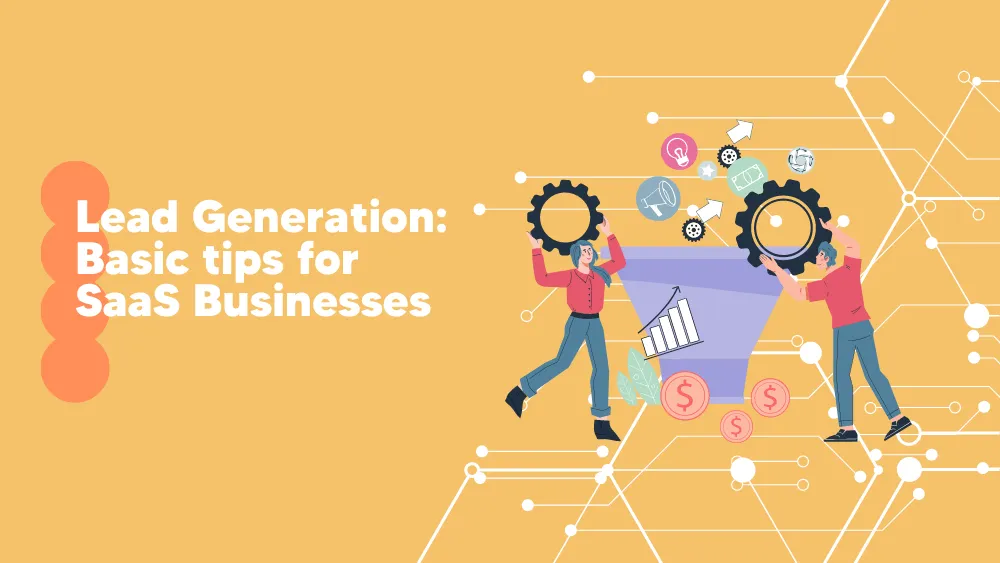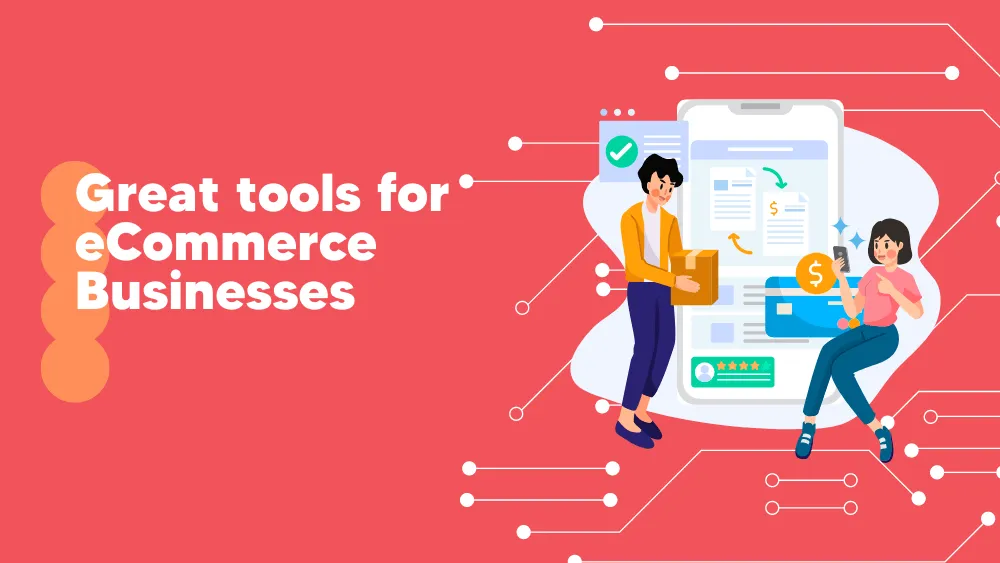Best Lead Generation Software
What is Lead Generation Software?
Lead generation software allows you to generate leads from specific channels before routing them to your marketing or sales team for conversion rate. Several channels and platforms through which you can generate leads. Email, social media platforms, and landing pages can generate leads. Various types of lead generation software cater to various channels.
For example, lead generation software with a focus on landing pages. Then some platforms combine lead generation and marketing automation services.
As you move prospects through the funnel, some will eventually convert leads. Lead generation programs increase conversions and revenue for your business by generating more leads. There are many lead generation software. We have the following lead generation tools:
- Email Marketing Software
- Email Lookup Services
- On-Page Lead Capture Software
- Live Chat Tools
- CRM software
- Prospecting and Outreach Tools for Social Media Software
- Tools for Generating Sales Leads
- Instruments of Marketing
Top Software for
Small Business
Medium Business
Enterprise Business
Free Software
Compare Lead Generation Software
impact.com
Apollo.io
Expandi
Leadpages
FullEnrich
Instapage
Everflow
PartnerStack
Close
GetResponse
Loyee
Leadfeeder
Table of Contents
What is B2C lead generation?
A B2C lead generation system is a tool that assists you in generating consumer leads. Lead generation systems can perform a variety of tasks. For example, a lead generation system can be used to generate new clients who may be interested in purchasing a product or service.
Existing clients can benefit from lead generation systems by increasing their productivity and sales. There are several types of lead generation systems. These systems generate leads in a variety of ways. One popular strategy is to create a list of current customers. A lead list can be created using a variety of methods.
Lead generation systems work best when used to drive traffic to your website. Therefore, you can sometimes run multiple campaigns on a single lead generation system. However, it’s important to remember that you don’t want to spend all of your money on one lead generation campaign.
Instead, running multiple campaigns concurrently would help generate as many new leads as possible. Lead generation systems are merely tools for increasing sales. A lead generation system adds value by assisting those who use it to provide quality and timely customer service.
What is the function of Lead Generation Software?
The generation of leads is not a one-size-fits-all strategy. Whether your company is B2B or B2C, lead generation programs will be used differently. For example, some lead generation programs are intended to increase customer engagement, while others are intended to assist you in streamlining the sales call process.
However, the concept remains the same regardless of which approach is best for your business. Get your company’s name in front of customer leads and entice them to buy from you before they go to the competition.
Lead generation can involve a variety of tools, but the following are some of the most common:
Content creation templates:
Some of the best lead generation software offers content creation templates, such as blogs, white papers, infographics, and e-books. This type of content boosts engagement on your website and social media. It also gets you going as an authority in your field. You can also require viewers to provide contact information before accessing long-form content like e-books or instructional videos.
Lead nurturing resources include:
It is critical to maintaining engagement once someone enters your pipeline to convert them into a marketing-qualified lead. Lead generation enables you to gather enough information about your contacts to target them with personalized messaging via email campaigns or phone calls.
Lead Generation Techniques:
Lead generation systems can assign a numerical value to your contacts. The higher the score, the more likely the contact will purchase. Leads are scored using various criteria, including industry, website activity, and company size. Manually scoring your leads would be time-consuming, making it one of the most potent and time-saving lead generation tools.
When your program identifies a high-value lead, it automatically forwards their information. The appropriate sales representative will be contacted to follow up and continue building the relationship.
Sales analytics and reporting:
Using lead generation will not increase profits automatically. It would help if you examined your analytics and reporting to determine what is and is not working. Checking your analytics and making changes to your process may take some time, but it is necessary to ensure your lead generation software is working for you.
Who can benefit from Lead Generation Software?
Lead generation software is helpful for both B2B and B2C companies. However, your competitors are most likely already employing it. According to a survey of B2B and B2C companies, leads software is used by more than half (57%) of respondents.
Types Lead Generation Software
The two main types of lead generation software are outbound lead generation and inbound lead generation. Some lead generation programs will feature both categories, while others will only focus on one.
Before you commit to a lead generation platform, think about how you currently generate leads. And how you plan to find them in the future. The best approach is to invest in lead generation software that includes inbound and outbound lead generation features. As a result, the two approaches can be combined for maximum impact.
-
Outbound lead generation channels
Outbound lead generation entails contacting people who are unfamiliar with your business. Such activities include cold calling, sales prospecting emails, direct mailing, and live events.
Outbound lead generation is more prevalent in B2B sales. Again, this is because you’re selling is designed to help people make money. So you can be in an excellent position to pique their interest.
Outbound lead generation takes time. It is, however, a tried-and-true method of attracting the attention of people who would never hear of your product otherwise. It’s also an excellent way to get your brand in front of people before your competitors.
People who require your product or service the most may not come to you, so you must go to them.
The following features are standard in outbound lead generation platforms:
- A sales dialer
- Contact management software
- Pay-per-click advertising
- Sales CRM Sales tracking
- Email templates for sales
- Email automation
-
Obtaining leads from inbound sources
Creating content and advertising that encourages potential customers to contact you is what inbound lead generation entails. Unfortunately, it’s more common in B2C industries, where “sales” tactics can be deceptive or pushy.
Because most inbound lead generation activity is digital, it is more cost-effective. Inbound lead generation, on the other hand, entails waiting for people to find you and contact you, which means they may be contacting the competition simultaneously.
Inbound lead generation involves the creation of materials that will naturally attract leads to you. When looking for software with inbound lead generation tools, keep the following features in mind:
- Developing a landing page
- Forms available on the internet
- Real-time chatbots
- Survey questionnaires
- Visitors’ tracking
- Creation and distribution of content
The Main Benefits of Using Lead Generation Software
Improved Customer Comprehension
Customers are unlikely to tell you what they are thinking. So you must ask the right questions and collect the correct data to understand their pain points better. And why do they buy from you or not?
Lead generation software lets you quickly gather more helpful information from potential customers. You can focus on the features that people prefer if you have a better understanding of why they are interested in your product or service in the first place. The more information you have about your customers, the better you can tailor your sales pitch and pipeline to their specific requirements.
Leads with higher qualifications
More leads aren’t always beneficial. More leads mean more work, and if most are cold or lukewarm, you’ll work harder for less money.
Customer data is analyzed by lead generation software to identify those who are most likely to buy from you. It tracks their participation, personal information, and interactions with your company to determine who truly deserves your time and effort.
Calculating lead value enables you to reach out to the most qualified leads as soon as possible. In contrast, their memories of you are still fresh. This excludes those who were looking around.
Improved Marketing Strategies
Thanks to powerful analytics reporting, your team can see which marketing campaigns generated the most valuable leads. With this information, you can continue to create campaigns that target the most qualified leads. Then you’ll be able to attract even more high-value customers while spending less time on cold leads.
Save Time in General
All of this adds up to the time saved. Lead generation provides your sales representatives with the most up-to-date customer information, removing the need for them to spend hours researching leads. Furthermore, your sales representatives will spend less time chasing down cold leads. This means spending more time following up with people who have already checked off several boxes.
It is a waste of time to go fishing in muddy waters. Guesswork depletes your resources, wasting both time and money. Think of your company as a fishing operation. Using a lead generation system is analogous to knowing where the most significant fish swim, what they like to eat, and when they’re hungry. That would unquestionably put you ahead of your competitors.
Features of Lead Generation Software
Here are the top features for purchasing a lead generation system.
An easy-to-use interface
Even the most powerful software will be rendered useless in your hands if you cannot use it. Marketing teams, not web developers, are marketing experts. Look for lead generation software with an intuitive user interface and various training options. Then every member of your team can use it without any technical issues.
Integrations
Because you’re already using business apps, and lead generation software you choose should support integrations. This enables data exchange between your lead generation system and your CRM, email apps, and other business-related platforms.
You can avoid switching browsers regularly by integrating your B2B lead generation software with your other platforms. Alternatively, ensure the accuracy of your data by cross-referencing it across platforms.
Analytics
When strategizing better business practices, it is critical to have accurate and up-to-date data. Therefore, any lead generation software you buy should have comprehensive analytics and reporting features. You can keep track of the numbers at all times this way. This allows you to make data-driven improvement decisions and identify areas where you fall short of your goals.
Automation
Automation saves significant time by responding to leads, analyzing data, and prioritizing leads. Of course, every task on your list does not need to be automated. Having the option, however, means having more control over how your teams spend their time.
Management of Customer Service
CRM (customer relationship management) tools will almost certainly come up in your search for lead generation software. Lead generation is a common feature of CRM because it’s part of nurturing customers in your sales pipeline and cultivating a loyal customer base.
Don’t worry if CRM appears to be too complicated for you right now. CRM for small businesses is designed to grow with you. While still reaping the benefits of lead generation, contact management, and sales tracking.
As your business grows, most CRM platforms allow you to add features. You can choose which features to invest in at any given time.
What is the cost of Lead Generation Software?
Pricing differs as much as apples and oranges, but certain factors consistently influence subscription terms. These factors include the number of users, the number of contacts, and the feature set’s complexity. Similarly, when two software products compete for the same business type, they may prioritize functions differently, resulting in a price difference as significant as free versus a three-digit monthly payment.
Lead generation software is typically sold as a software-as-a-service (SaaS). Businesses have to pay a monthly subscription fee to gain cloud-based software access.
What should you look for when purchasing Lead Generation Software?
Many lead generation programs guarantee fast and high-quality results. To determine which of your options best meets the needs of your company, follow these steps:
First, recognize your lead generation issues.
You must first identify the issues impeding your progress toward your objectives. For example, sending users to a generic web page, not having effective Calls-to-Action (CTA), and failing to follow up on warm leads are all obstacles to lead generation.
Identifying problems in your lead generation process will help you know what to look for when researching and comparing the features of various lead management software.
Determine which software service meets your needs the best.
Now that you’ve identified your primary challenges, it’s time to investigate the various lead management software options available. You may feel s by the number of options available to you.
So, before making a final decision, we recommend you inquire about the software’s performance and comprehend how it can deliver the desired results. Make sure that the answers to your questions are precise and bullet-pointed.
This procedure will help you eliminate software options that do not meet your needs. It can also help you determine how responsive and helpful their customer service team is in the future if you run into issues.
Choosing the best lead generation software for your business is difficult. However, spending time and effort on thorough research will save you time and money on a service that will fall short of your expectations.
Recognize your abilities.
Recognize your technical, managerial, and team abilities. It takes a significant amount of time to transition to new software. You must train yourself first, followed by the members of your team who will be using this new tool daily.
You would prefer software with a simple and intuitive user interface. This enables you and your team to quickly adapt to and maximize the benefits of your new tool.
Also, does your lead generation teamwork in your office? Managing virtual teams, as most businesses do in the “new normal,” transition and training will be even more difficult.
Can Zoom meetings be used to train effectively? Are your team members capable of learning a new tool in this configuration? These are essential questions to consider before investing in lead generation software right now.
If you work in a virtual environment now, a recent guide on remote team management is an excellent read for tips on how you and your team can stay productive.
Look over and understand their pricing, terms, and conditions.
Read the contract, terms, and conditions of the lead generation company. Most of us are used to scrolling down to the bottom of the terms and conditions page and clicking “accept.”
It is best to understand how they store and protect your data and how well they can support you if an unforeseen issue arises. It is also critical to understand the pricing structure.
It would help if you considered the impact of this new expense on your cash flow and revenues. It would be best to calculate the ROI (Return Of Investment) to determine whether their service cost is sustainable and profitable.
You eliminate the possibility of future conflicts and misunderstandings by being thorough in these areas. Exercise extreme caution to protect your company from unfavorable incidents.
Determine your leadership qualifications.
The sudden influx of new leads can be exciting when you use a lead generation service. This does not, however, imply that you have already achieved your goals. Therefore, it is critical to investigate the leads you are receiving and determine if they are the right type.
A good lead generation service must provide relevant, and quality leads. The service would be ideal for helping you create a lead scoring model. This model divides leads into two categories: those previously engaged and those who respond quickly to promotions.
Finally, choose a service that will assist you in converting more leads. The ultimate goal is to complete the acquisition process by converting leads to sales and exceeding your customers’ expectations.
Establish your goals and objectives.
The primary goal of lead generation is to help your business grow. And, as your company grows, so will your lead generation objectives.
Consider the scalability and flexibility of a lead generation service before investing. Is it scalable as your company grows? Is it essential to upgrade to a more expensive plan for them to accommodate your growth? Can they maintain consistency in the face of these changes?
These factors will help you choose software for lead generation that you can maximize over time. If you purchase a platform with limited capabilities now, it may be costly to spend time and money transitioning to a new platform later.
























